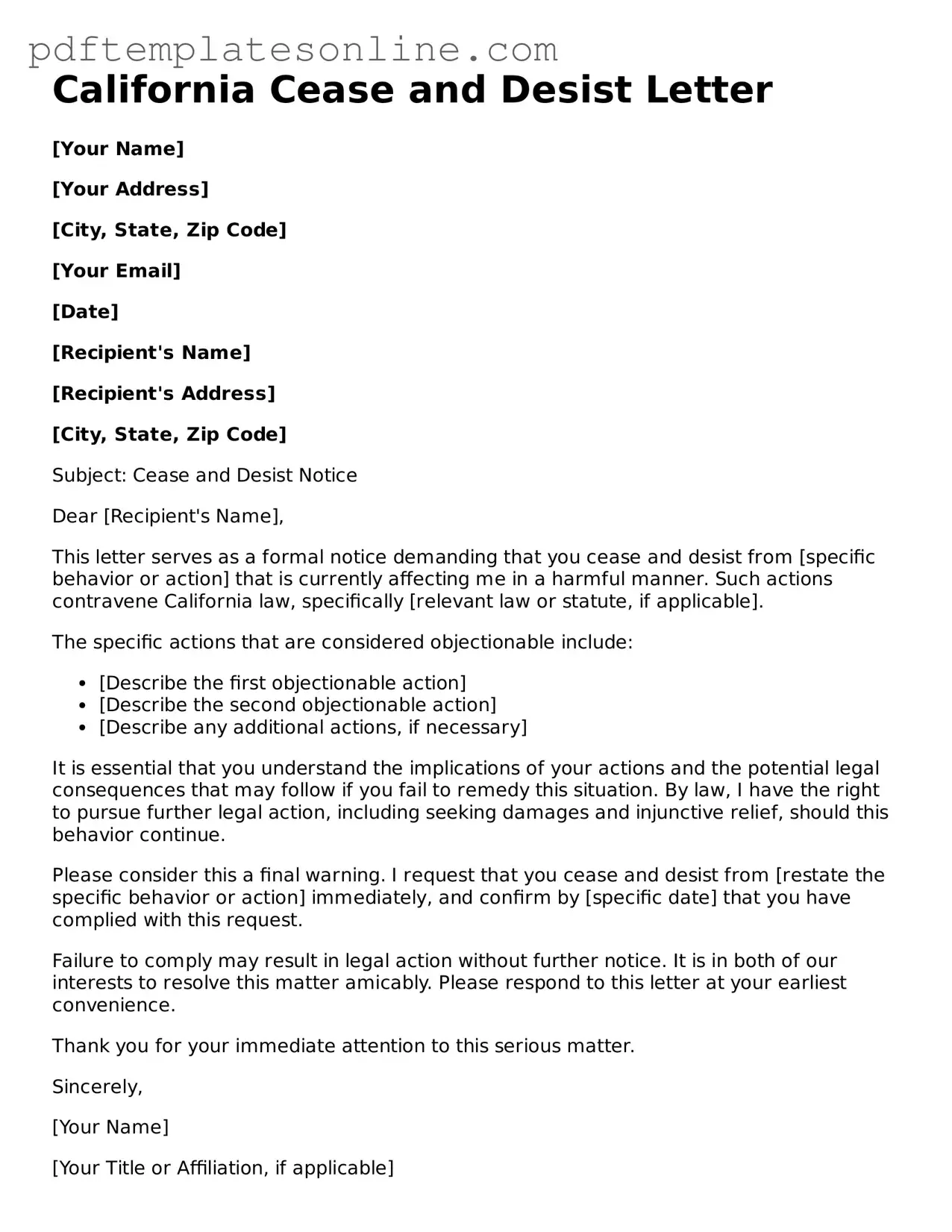Filling out a California Cease and Desist Letter form can be straightforward, but there are common mistakes that people often make. One frequent error is failing to clearly identify the parties involved. It’s crucial to provide complete names and addresses for both the sender and the recipient. Without this information, the letter may lack the necessary context, making it less effective.
Another common mistake is not specifying the exact nature of the complaint. Vague descriptions can lead to confusion. For instance, stating that someone is “harassing” you without detailing the specific actions can weaken your case. Clarity is key. Be direct about what behavior you want to stop and provide examples if possible.
Additionally, many individuals overlook the importance of including a deadline for compliance. A cease and desist letter should clearly state a timeframe within which the recipient must cease the specified actions. Without a deadline, the recipient may not feel any urgency to comply, diminishing the letter's impact.
People also sometimes forget to keep a copy of the letter for their records. Documenting your communication is essential for any future legal proceedings. If the situation escalates, having a copy of the letter can serve as important evidence of your attempts to resolve the issue amicably.
Lastly, some individuals neglect to proofread their letters before sending them. Typos and grammatical errors can undermine the professionalism of the document. A well-written letter reflects seriousness and can enhance the chances of a favorable response. Taking the time to review your letter can make a significant difference.
